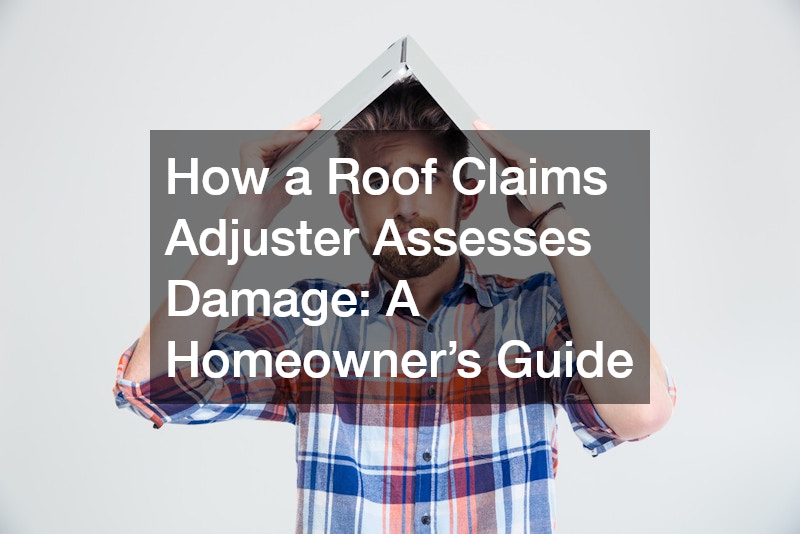Disclaimer: The insurance information provided here is for general knowledge only and does not replace advice from licensed insurance professionals. Please consult a qualified advisor for coverage decisions.
Understanding how to file home insurance claims for natural disasters is crucial for homeowners facing unexpected damages. Natural disasters such as hurricanes, earthquakes, floods, and wildfires can cause significant harm to your property, making it essential to know how to navigate the insurance claims process effectively. This comprehensive guide will provide you with the knowledge and steps needed to ensure you receive fair compensation from your insurance provider.
Navigating the aftermath of a natural disaster can be daunting, but being prepared and informed can alleviate some of the stress. By understanding your policy coverage and following the steps outlined in this guide, you can maximize your chances of a successful claim outcome.
1. What is Covered Under Home Insurance for Natural Disasters?

Home insurance policies typically cover a range of natural disasters, including storm hail wind damage. However, it’s crucial to be aware that coverage can vary significantly depending on your policy and location. For instance, while wind damage may be covered in some areas, it might be excluded or have specific limitations in coastal regions prone to hurricanes.
In addition to understanding what is covered, it’s equally important to know the exceptions and limitations in your policy. Certain disasters, such as floods or earthquakes, often require separate insurance policies or riders. Before disaster strikes, review your policy carefully to confirm your coverage details and ensure you have adequate protection.
2. Initial Steps to Take After a Natural Disaster
After ensuring everyone’s safety, your next priority should be to mitigate further damage to your property. This might involve securing temporary repairs or employing fire damage services to prevent secondary issues like mold or structural damage. Not only does this protect your property, but it also demonstrates to your insurer that you’ve taken responsible steps to minimize losses.
Documenting the damage thoroughly is critical for substantiating your insurance claim. Take photographs and videos of all affected areas, focusing on details such as water damage restoration needs and structural impairments. Written descriptions should accompany visual evidence, providing context and listing damaged items. A detailed inventory of losses, including personal belongings, will further strengthen your claim’s validity and expedite the assessment process.
3. How to Document Damage Properly

Photographic evidence is indispensable when documenting damage caused by natural disasters like floods or wildfires, illustrating the extent of destruction and specific areas needing repair or restoration, such as water damage restoration requirements. Ensure your photos are clear and well-lit, capturing both wide-angle views and close-ups of damaged items.
In addition to visual documentation, written descriptions are essential for providing context and details that photographs may not fully capture. Describe the damage comprehensively, noting any structural issues, damage to personal property, or necessary repairs. A thorough inventory of damaged items, including their approximate value and purchase dates, will further substantiate your claim.
Accuracy and completeness are paramount in documenting damage. Avoid speculative or exaggerated claims, as these can delay the processing of your claim and potentially raise questions about its validity. Organize your documentation systematically and keep copies of all communication with your insurer for reference.
4. How to File a Claim
Before filing your claim, gather all necessary information, including receipts for emergency repairs like smoke damage cleaning or temporary accommodations. Organize your documentation logically to facilitate a smooth claims process and minimize delays.
When submitting your claim, follow your insurer’s specific instructions and ensure all required documentation is included. Online submission portals or dedicated claims departments are common avenues for filing. Double-check that your contact information is accurate to facilitate communication throughout the claims process.
After submitting your claim, maintain regular contact with your insurance company to monitor its progress. Promptly respond to any requests for additional information or clarification to avoid unnecessary delays. Clear and proactive communication can expedite the assessment and settlement of your claim.
5. Dealing with Insurance Adjusters

Insurance adjusters play a pivotal role in the claims process, tasked with assessing the damage and determining the compensation owed under your policy. Understanding their role and effectively communicating with them can significantly impact the outcome of your claim.
When interacting with an insurance adjuster, provide them with accurate and detailed information about the damage incurred during the natural disaster. Be prepared to walk them through your documentation, including photographs of water and mold restorations or other necessary repairs. Cooperation and transparency will help build trust and streamline the assessment process.
It’s important to keep thorough records of all communications with the adjuster, including notes from phone calls or in-person meetings. Document any agreements or commitments made during these interactions to avoid misunderstandings later on. If disagreements arise regarding the scope or valuation of damage, remain professional and provide additional evidence to support your position.
6. Temporary Repairs and Expenses
Temporary repairs are often necessary following a natural disaster to prevent further damage to your property, such as roofing hail damages or securing openings caused by wind or debris. These initial actions not only protect your home but also demonstrate your proactive efforts to mitigate losses.
Keep detailed records of all expenses related to temporary repairs, including receipts for materials and labor. These receipts are essential for reimbursement and should be submitted along with your claim documentation. Your insurance policy will outline the types of temporary repairs eligible for coverage and any limits on reimbursement amounts.
The reimbursement process for temporary repairs can vary depending on your insurer and policy terms. Some policies may require pre-approval for expenditures above a certain threshold, while others may reimburse you after you’ve submitted receipts. Understanding your policy’s requirements will help you navigate this process smoothly and maximize your reimbursement.
7. How Long Does the Claims Process Take?

The timeline for processing home insurance claims after a natural disaster can vary based on several factors, including the extent of smoke damage cleanup required and the complexity of your claim. While some claims may be settled quickly, others may take weeks or even months to resolve fully.
Insurance companies typically strive to process claims promptly to assist homeowners in recovering from disasters swiftly. However, delays can occur due to high volumes of claims, the need for additional information, or disputes over coverage. Maintaining open communication with your insurer and promptly providing requested documentation can help expedite the process.
To mitigate delays, stay informed about the status of your claim and inquire about expected timelines for assessment and settlement. Understanding the factors influencing the processing time can provide clarity and manage expectations during a potentially stressful period.
8. If Your Claim is Denied
Facing a denial of your home insurance claim can be disheartening, but it’s essential to understand the reasons behind the decision before taking further action. Insurers may deny claims for various reasons, such as coverage exclusions, policy limitations, or discrepancies in documentation.
If your claim is denied, review the denial letter carefully to identify the specific reasons provided by your insurer. Understanding the grounds for denial will help you determine the next steps to take. In some cases, the denial may be due to misunderstandings or errors that can be rectified by providing additional information or clarifications.
Consider appealing the denial if you believe your claim was unjustly rejected. Most insurance companies have an appeals process that allows policyholders to challenge denials with new evidence or arguments supporting their claim. Seek guidance from a local water restoration company or legal advisor specializing in insurance claims to assess your options and strengthen your appeal.
While appealing a denial, continue to communicate with your insurer in a professional manner. Keep records of all correspondence and maintain copies of any additional documentation submitted during the appeals process. Patience and persistence are key when seeking a reconsideration of your claim’s status.
9. Preventing Future Damage
After experiencing a natural disaster, taking proactive steps to prevent future damage to your home is crucial. Consider investing in home improvements and reinforcements tailored to your region’s specific risks. Consulting with a roofing contractor to install impact-resistant roofing materials or reinforcing windows against hurricanes can mitigate potential damage in future disasters.
Regular maintenance of your property is another effective strategy for minimizing risks and preserving your home’s structural integrity. Schedule inspections for your roof, plumbing, and electrical systems to identify potential vulnerabilities before they escalate into costly repairs. Addressing minor issues promptly can prevent them from becoming major problems during a disaster.
Update your insurance policy regularly to reflect any home improvements or increased coverage needs resulting from preventative measures. Inform your insurer about upgrades or changes that enhance your home’s resilience against natural disasters. Maintaining comprehensive coverage ensures you’re adequately protected in the event of future incidents.
10. Common Mistakes to Avoid
Avoiding common pitfalls can significantly enhance your experience when filing a home insurance claim for natural disasters. Incomplete documentation is one of the most frequent errors that can lead to delays or denials. Ensure all documentation, including photographs of residential roofing companies repairing damage and written descriptions of losses, is thorough and accurate.
Missing deadlines is another critical mistake to avoid. Most insurance policies specify deadlines for filing claims or submitting additional documentation. Failing to adhere to these timelines can jeopardize your ability to receive compensation for damages incurred during a natural disaster. Set reminders and prioritize timely submission of all required information to your insurer.
Fully understanding your insurance policy is essential to avoid misunderstandings or misconceptions about coverage. Take the time to review your policy’s terms, exclusions, and limitations before disaster strikes. If you have questions or uncertainties, consult with your insurance agent or seek clarification from your insurer to ensure you’re fully informed about your coverage.
Filing a home insurance claim for natural disasters can be a complex and challenging process, but thorough preparation and understanding are key to achieving a successful outcome. By following the guidelines outlined in this comprehensive guide, homeowners can navigate the claims process with confidence and optimize their chances of receiving fair compensation from their insurance providers.
Natural disasters such as hurricanes, floods, wildfires, and earthquakes can cause devastating damage to homes and personal property. Understanding your insurance coverage, documenting damage accurately, and promptly filing your claim are crucial steps in securing the financial support needed for recovery. Remember, the initial steps you take after a disaster, such as ensuring safety and documenting damage with detailed photographs of roofing hail damages and other issues, can significantly impact the efficiency of your claim process.
Dealing effectively with insurance adjusters and maintaining clear communication throughout the claims process are also essential. Providing accurate information, keeping thorough records, and addressing any disagreements professionally can expedite the assessment and settlement of your claim.
In the event of a claim denial, don’t lose hope. Review the reasons provided, consider appealing the decision with additional evidence or expert advice from a local water restoration company, and explore all available options to challenge the denial. Persistence and diligence can often lead to a successful appeal and the compensation you deserve.
Preventing future damage through proactive home improvements, regular maintenance, and policy updates is vital for safeguarding your home against future disasters. Consulting with professionals such as residential roofing companies and staying informed about your insurance policy’s terms and deadlines can help you avoid common pitfalls that may jeopardize your coverage.
In conclusion, while filing a home insurance claim for natural disasters may seem daunting, armed with the knowledge and guidance from this article, homeowners can navigate the process effectively. By taking proactive steps and adhering to best practices, you can protect your home, recover from disaster, and ensure peace of mind knowing you’re adequately prepared for unforeseen challenges.



